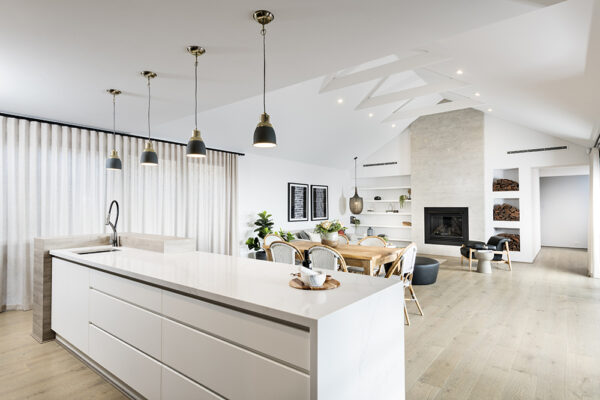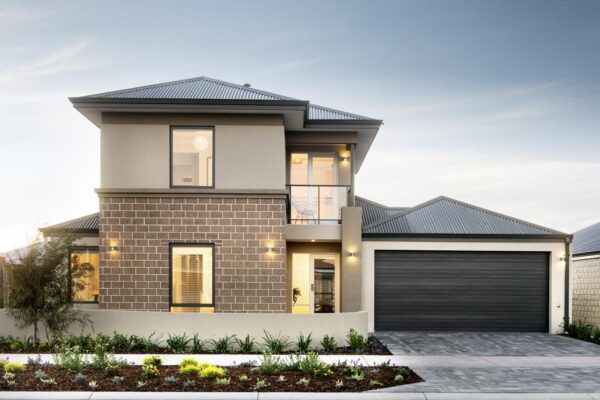Evolution Revolution
WA’s building industry is combining traditional and innovative construction techniques in order to meet the demands of today’s buyers for affordable two-storey homes.
Chances are anyone who’s bought or built a home in WA has heard or asked the question “is it double brick?” Historically, our housing market has been dominated by traditional double brick and tile construction and for generations this has provided a reliable method of residential design and construction.
WA, however, is one of the only states in the country, in fact one of the only places in the world, where double brick construction dominates over alternative construction methods such as timber frame or brick veneer.
My career in residential home design and construction has spanned 23 years, yet it’s only been in the past few years that our local mindset has started embracing more innovative and efficient construction methodologies.
TIME AND MONEY
Driving this thinking is the desire to make building a home more affordable and speed up construction time frame for two storey homes, in particular. As WA’s population has grown, block sizes have shrunk and two-storey dwellings have become increasingly popular. In order to remain competitive, it has become necessary for residential builders to evolve and offer their clients creative new solutions.
ONWARDS AND UPWARDS
Residential Building WA, as part of one of WA’s largest building groups, is proud to have been the leader in the push towards building double storey homes better, faster and more affordably.
Our team began looking at innovations in two-storey construction back in 2012. It became clear there was a surging demand for affordable double-storey homes that can be built at a speed to rival single-storey designs.
Our market research and consultation with customers indicated that while homeowners were looking for speed and affordability, they also wanted a home that had flexibility in design, was assembled onsite and provided insulation from sound and weather that was as good as, or better than, traditional double brick.
Residential Building WA went to market in 2014 with a methodology that combines double brick construction on the ground floor with a lightweight upper storey that’s assembled on site.
QUESTION TIME
The obvious question I get asked is “What are the advantages of building a lightweight versus a completely double brick two-storey home?” The simple answer is that it is more affordable and much quicker.
Residential Building WA designs are affordably priced, a price that is comparable to many single storey homes on the market. Better still, our lightweight construction method is flexible, allowing us to develop a large suite of home designs to suit blocks from 7.5m up to 17m. Many include balconies and interesting design features such as cantilevers, stunning cladding materials and complex shapes.
KEEP IT SIMPLE
Lightweight construction simplifies the engineering requirements for the foundations of the home, which makes building on some blocks with reactive soil types more affordable. It also reduces the amount of steel and concrete required in the foundations to support the dwelling, representing a direct material cost-saving.
TREADING LIGHTLY
The environmental impact of lightweight construction is also playing a key part in people’s decision-making process. Reducing the amount of concrete required can improve the carbon footprint of a new home. When you couple this with the ability to “super insulate” a lightweight home, the homeowner can easily reduce the amount of energy consumed for heating and cooling. And the drawbacks?
Some might say things such as sound transfer and the lack of thermal mass may be an issue. We say these minor points have largely been negated with our construction techniques. Technological advances in both acoustic and thermal insulation help put paid to any fears of hearing what’s going on next door. Likewise, the thermal properties of our insulation and cladding products are such that a framed wall can now achieve two, three or even more times the performance of a brick wall.
Kristan Bailey
Manager of design, research and development at Residential Building WA makes a strong case for lightweight construction
10 May 2016




 home since 2006.
home since 2006.




